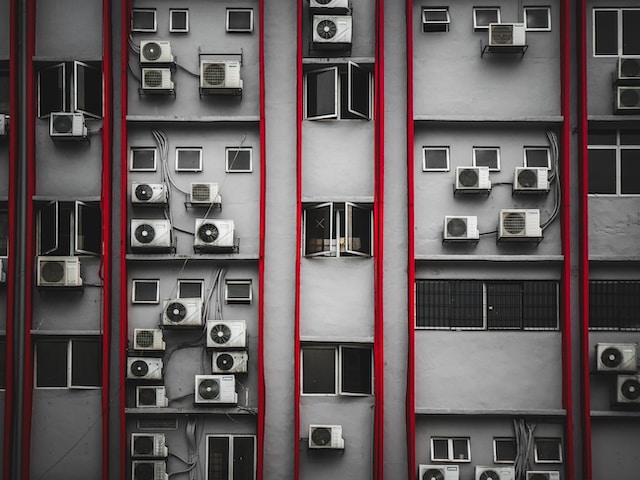Lip injections aren’t as painful as they might seem. House of Aesthetix will apply numbing cream to the lips before injecting to reduce discomfort.
Most dermal fillers are temporary, and the lips reabsorb them more quickly than other areas of the face. Reputable injectors will carefully monitor the amount of filler used to achieve a balanced, natural-looking result.

Natural fillers, also called dermal fillers, are soft, gel-like substances injected into the skin to smooth lines and replace lost volume, creating a refreshed appearance. Some common concerns treated with these injections include fine lines around the mouth, thinning lips, and nasolabial folds (the creases that run from the corner of your nose to the corners of your mouth). These injectables are made of hyaluronic acid, which is found naturally in the body and helps the skin retain moisture by binding it to water molecules. When properly administered by a trained expert, these fillers can provide a rejuvenating and youthful look that is both natural-looking and long-lasting.
A benefit of a natural filler is that it is biodegradable, which means that the face breaks down and absorbs the substance over time. This helps to ensure that the result will be consistent and not distorted or unnatural, which can sometimes happen with other fillers.
In addition, because these dermal fillers are composed of naturally-occurring materials, they do not trigger allergic reactions in most people. This makes it a great option for those who are concerned about the safety of an injectable or who are sensitive to other chemical-based products.
Another advantage of a natural filler is that it does not need to be absorbed into the bloodstream, which means there is less risk of infection after treatment. While some people may experience a temporary feeling of swelling or bruising after the procedure, this is usually only noticeable for a day or two.
Natural fillers are a gentle embrace of your unique features, celebrating your authenticity while enhancing the beauty that makes you, you. The team at Timeless Elements is experienced in providing natural-looking enhancements, using a combination of techniques and injector’s skill to help you achieve the look you want. Whether you are looking for a subtle plump or a boost to the cheekbones, we can help you find the best solution for your needs. Contact us today to schedule a consultation.
Alloderm is a biologic matrix used in many medical procedures to restore tissues to a healthy state. It is especially useful in repairing soft tissue defects, such as recession. It also aids in the re-growth of bone in the alveolar ridges, which is critical for implant placements. It can also be used in a variety of oral surgeries, including gum disease treatment, and to treat bone loss around dental implants. This graft material has been used successfully in thousands of surgeries, and it is a great alternative to harvesting your own tissue from elsewhere in the mouth. It eliminates the complications associated with a second surgical site, and it results in faster healing, with better cosmetic results.
AlloDerm is donated human (cadaveric) tissue, and it is thoroughly screened before use. The U.S. Tissue Bank reviews donor medical records, and donors are found to be negative for Syphilis, Hepatitis B and C, and HIV Types 1 and 2. AlloDerm is washed in normal saline before being freeze-dried and processed into a usable form. It is then sterile and ready to be placed in patients.
Because of the extensive screening process, there have been no documented cases of transmission of the human immunodeficiency virus (HIV) from AlloDerm. However, like any other tissue implanted into the body, there is an initial risk of infection until it becomes incorporated by the patient’s cells.
This is a risk that is minimized by strict adherence to aseptic technique during the surgery. Once the graft is placed, it will not infect the surrounding tissue, and it will resist infection just as well as your own natural tissues.
A new procedure, called meshing alloderm, increases the surface area of the graft, which can lead to improved integration and neovascularization. Our clinical experience has shown that meshed AlloDerm works just as well as the standard unmeshed graft.
Infection rates of AlloDerm have been reported to vary between studies, and may be affected by obesity status. We have found that the rate of complication with AlloDerm is lower than in other published series using cryopreserved and free-dried AlloDerm. This could be a result of more careful processing and aseptic techniques to ensure the quality of the graft.
Lip implants are a permanent surgical procedure that creates fuller, more defined lips. This procedure is typically performed by a plastic surgeon and requires a brief recovery period of up to two weeks. During this time, patients should avoid opening their mouth too wide or putting too much pressure on the area. This can cause the implants to shift out of place. To avoid this, patients should use ice packs and keep their head elevated as much as possible. During the recovery process, patients should also take pain medication as needed.
The hyaluronic acid fillers used in lip injections are derived from substances naturally found in the body, making allergic reactions rare. These fillers also contain lidocaine, a local anesthetic, which further reduces pain and discomfort. Injectables are also easy to control, meaning that a doctor can gradually add more volume over multiple appointments until the desired results are achieved.
A reputable injector will be able to determine the best type of filler and technique to use for your desired results. During your consultation, they will take pictures and examine your facial structure to assess your lip shape and size. They will also ask you about your cosmetic goals so they can align on strategy for treatment. If you have sensitive skin, be sure to let your injector know beforehand so they can make necessary adjustments.
Before the injections, your doctor will apply a topical anesthetic to numb the area. They will then mark the areas where the injections will be placed and use fine needles to inject the desired amount of filler. Some people experience mild to moderate discomfort during this part of the procedure, but this is usually short-lived. You can help ease this discomfort by avoiding certain foods and beverages before your appointment, taking a sedative such as acetaminophen (Tylenol(r), for example) prior to the appointment, and bringing a stress relief ball to squeeze if necessary.
After a hyaluronic acid filler injection, you will have minor bruising and swelling that should resolve on its own within a few days. You can speed up the healing process by using ice packs and by taking a prescription anti-inflammatory such as ibuprofen, which is safe for your skin.
Fat transfer uses your own body fat to reduce the appearance of creases and wrinkles and enhance facial contours, giving you a natural-looking and long-lasting cosmetic result. The procedure utilizes a naturally-occurring, safe substance that minimizes the risks of allergic reactions that can occur with some other fillers and surgical procedures.
During this process, your plastic surgeon will collect fatty tissue from a part of the body that is abundant in excess fatty tissue (typically the abdomen, flanks, or thighs), via liposuction techniques. The fatty tissue is then processed and purified so that it can be injected into facial depressions, adding volume and creating youthful face and neck contours.
Although the use of autogenous grafts to treat facial deficiencies has been around for over a century, modern fat transfer is much less invasive than earlier methods of treating hollow areas and fine lines. The key to a successful treatment is a careful balance of volume restoration and the preservation of existing, healthy tissue.
Because the injected fat is living tissue, some of it will be broken down and resorbed by your body over time. However, since up to 80% of the injected fat remains, most patients will experience only minor to moderate resorption of the transferred material. To compensate for this, most surgeons will slightly overcorrect a facial area to take into account the fact that some of the injected fat may go away in the future.
Another benefit of fat grafting is that it eliminates the possibility of adverse side effects that can sometimes accompany other dermal fillers, such as asymmetry and a loss of natural facial volume. Additionally, unlike dermal fillers, the re-introduced fat cells can survive and thrive in their new location without the need for frequent touch-up injections.
Lastly, fat grafts require no incisions or scarring to be performed, resulting in a minimally invasive procedure with rapid recovery. Visible bruising and swelling usually clears within a week, and patients can return to work and other activities shortly after the surgery.



